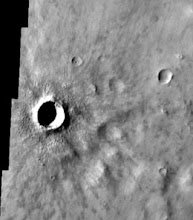My princess story is located in an extremely fictionalized version of the Basque country, or Euskal Herria, which is located (in the real world) in northeastern Spain and southwestern France, surrounding the Pyrenees. Not everything is accurate. However, I thought I'd explain some of the more specific details that I've used.
1. Many of the names I've used are Basque--but not all of them. Elixabete, Matxin, Zuzen, Edurne, Kistiñe and Matxin are all Basque names, while Iñigo, Cipriano and Santiago are not. Isidro is apparently actually an Italian name that's found some use in Spain.
2. I named my fictional country "Euskal." This doesn't actually make much sense in actual Euskara (the Basque language), but works well enough for my purposes.
3. "By the time Princess Elixabete was born, nobody really thought about Euskal unless they were a logging company or particularly interested in artisanal cheeses." The Basque people were primarily shepherds. They continue to make some damn fine cheese, let me tell you, although I think that logging is more a historic industry than a modern one. (I'm not 100% sure here.)
4. The cows the Basque keep (they also keep sheep and goats) are tan or a light, warm brown, not black-and-white, the way a lot of people in the US at least think of when cows are brought up.
5. Txapelas are a type of Basque hat very similar to a French beret, currently worn mostly by older, more traditional men. (Also by the younger generations, but usually only at festivals when they're feeling both patriotic and drunk.)
6. Matxin's home country, Nafarroa, is also based off of a region in Spain, Navarra, called Nafarroa in Basque. Navarra is just below the (official) Basque country and is claimed by some Basque secessionists, and it also continues in a further east part of the Pyrenees. There's a lot of Basque culture, historic and modern, in the northern part of Navarra, and there are a lot of cultural similarities between the two areas. Historically, real world Navarra was very important--it was the last independent region to cede to the Emperor/King of united Spain, and the seal of Navarra is the lower-right quarter of the seal of Spain--even if it's currently fairly obscure outside of Spain. The capital of Navarra is Pamplona, where they hold San Fermines, a festival you probably know of because that's where the Running of the Bulls happens. My fictional Nafarroa is somewhat more obscure than real-world Navarra. (Navarra is also spelled "Navarre" in English sometimes. This is crazytalk, don't listen to anyone who does it.)
7. Andalucía is another region, in the very southernmost part of Spain. It's very different from Euskal Herria and Navarra, and you probably know it as Andalusia. The accent spoken there is totally incomprehensible.
8. Cuajada is kind of like a sheep's-milk yogurt that's seared with a poker, giving it a delicate, smoky flavor. It's a traditional Basque dessert, served with honey or sugar and usually accompanied by walnuts, although that might be overlap from another traditional Basque dessert, sheep's-milk cheese accompanied by membrillo (a thick, sweet quince jelly) and walnuts.
Subscribe to:
Post Comments (Atom)




No comments:
Post a Comment